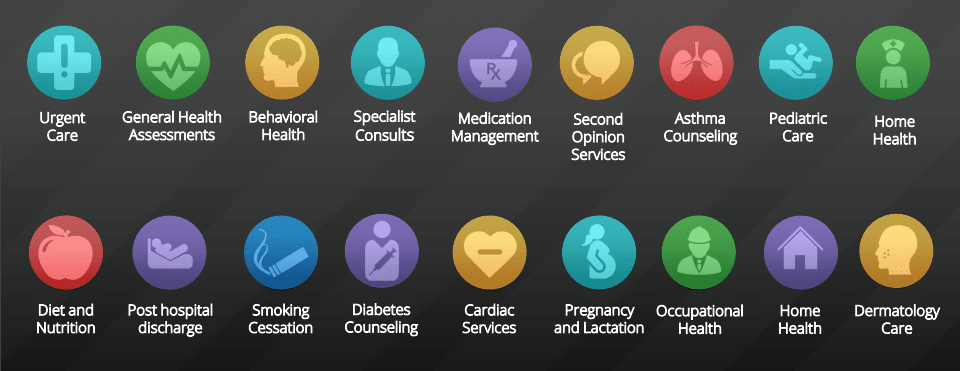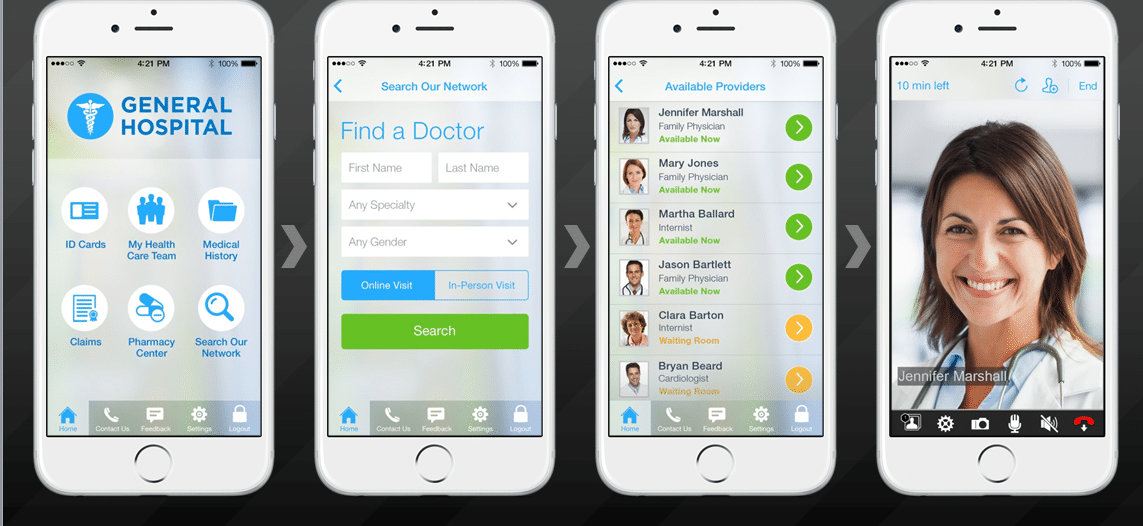Getting Started with Telehealth: The Top Five List
So you’re considering telehealth, but you’re wondering where to start. Here are the top five considerations you should take into account for a successful telehealth strategy and implementation.
#1: Start with the end in mind
When you first begin seriously considering telehealth for your organization—whether it be a health system, health plan, employer, retailer, etc.—you need to ask yourself “What are my telehealth program goals?” Is your organization interested in acquiring new patients or do you want to save money? Are you going to measure success based on antibiotic stewardship or based on reductions in hospitalizations? Is it more important to increase primary care relationships or have high visits and enrollments on the system? There is no right or wrong answer; it depends on what your organization is looking to achieve through telehealth. Once you have your goal in mind, it will dictate how the rest of the program is set up and executed.
#2: Identify all your potential use cases and prioritize
A major misconception about telehealth is that it can only be used for urgent care. In reality, there are many use cases for telehealth, including but certainly not limited to behavioral health, medication management, asthma counseling, pediatric care, post hospital discharge, pregnancy and lactation services, and dermatology. When implementing telehealth for the first time, you will want to first identify all the potential use cases for your organization, and then prioritize them based on what you need right now, and what you should implement further on down the line.

#3: Enlist providers from the get-go
There is nothing more important than physician buy-in. If the physicians are excited about telehealth, its chances of succeeding grow exponentially. In order to garner physician excitement, you should invite clinical discussion from the get-go and recruit clinical leaders who are not only excited about telehealth, but who are respected within the clinical community. If a respected clinician becomes a telehealth champion, other physicians who are more hesitant will begin to show support for the initiative. Another important step is to create care guidelines and protocols to help ensure the physicians that telehealth is a safe way to practice medicine. Online Care Group has its own set of clinical guidelines that physicians can use, and they also hold telehealth Grand Rounds to bring together the clinical community to engage in conversation and share use cases.

#4: Make a telehealth integration roadmap
There are a lot of moving parts when you’re implementing a telehealth service—from managing workflows and administration functionalities, to handling eligibility and claims. Some other integration considerations include where the service is going to be hosted and how. American Well has the ability to build you a dedicated telehealth consumer app—complete with your logo, fonts and colors—or we can place the telehealth functionality in to your existing app with our mobile SDK. Once you’ve decided how consumers are going to access the service, you’ll need to choose how you’re going to offer it—on-demand, scheduled or both. If you’re considering scheduled visits, you will need to figure out how to balance that with a physician’s brick and mortar schedule. If you’re a health system, you’re also going to want to integrate with your EMR. While American Well has APIs specifically for this type of integration, it’s always useful to map out an entire integration plan before getting started.

#5: Plan for consumer engagement
The saying “If you build it they will come” does not apply to telehealth—you need to tell consumers about it! The first step to marketing a telehealth service is setting a budget and having goals that can be realistically attained under that budget. Next, you should adopt a multi-channel approach that includes things like email, direct mail, digital and in-office marketing. By monitoring and measuring each of these channels, you will find which are garnering the best consumer response. You should be communicating regularly with your providers, whether it’s via in-person meetings, newsletters or email, to ensure they are aware and on-board with the service before, during and after launch.
Follow these steps and you’ll be on your way to successful launch and offering.


